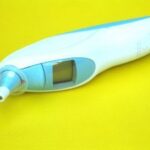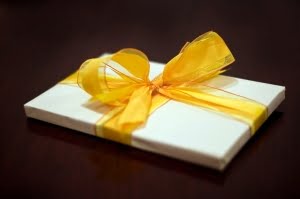One subject that provides a plethora of opportunities for investigation and learning about scientific concepts is the weather. Simple experiments can provide concrete examples to demonstrate scientific concepts such as evaporation, condensation, heat transfer, air pressure, wind currents and much more. The project presented in this article consists of a number of individual activities in which the learner will construct simple devices used to measure weather conditions. Simple experiments to illustrate the process of cloud formation and the formation of a vortex (tornado) will be included. In addition, the learner will construct a simple thermometer, barometer, wind sock and rain gauge. These activities should be done with the supervision of an adult, as there will be potentially harmful chemicals and instruments used for some of them.
1. Cloud Formation Explained
You will need a large jar, water, a rubber band and plastic wrap for this experiment.
Procedure: Fill the jar half full of water and affix some plastic wrap over the tip of the jar with a rubber band. Place the jar in the sun and observe what has happened after a few hours. You will find that some water drops have condensed on the plastic wrap. This is a good illustration of how water evaporates from the earth and is condensed in the upper atmosphere to form clouds.
2. Observe the formation of a vortex (tornado)
You will need an 8 oz. jar with a lid, water, vinegar, clear liquid lish soap and a small amount of glitter.
Procedure: Fill the jar 3/4 full of water and put in 1 tsp. vinegar, 1 tsp. dish soap and the glitter. Tightly close the lid and swirl the jar to see a vortex form. Explain how the vortex forms due to the differing speeds of the water in the middle and the water next to the sides of the jar.
3. Learn how a thermometer works.
You will need tap water, a clear drinking straw, a clear plastic narrow-necked plastic bottle, rubbing alcohol, food coloring and modeling clay.
Procedure: Fill 1/4 of the bottle with equal amounts of water and rubbing alcohol, Add a few drops of food coloring to the mixture. Place the straw in the bottle in place using the modeling clay. Observe what happens to the liquid in the straw when the temperature becomes warmer or cooler. Place the homemade thermometer along side a real one and compare the movement of the liquid with temperature change.
4. Determine wind direction.
You will need the sleeve of a large long-sleeved shirt, some wire, a hot glue gun ,a small rock and some string or twine.
Procedure: Cut the sleeve from the shirt. Bend a piece of the wire into a circle that is the same size as the large end of the sleeve. Hot glue the wire into the top end of the sleeve. Glue the rock tightly to one side of the wire circle. Tie the string onto the wire opposite the rock, then tie the other end of the string to a tree branch so it can move freely. The rock will keep the wind sock facing into the wind.
5. Measure the rain with a homemade raid gauge.
You will need a 6-inch plastic ruler, scissors, clear waterproof tape, a wide mouth glass jar with a wide bottom.Procedure: Place the ruler inside the jar and tape it in place. Place the jar in an open area when it is going to rain. After it rains, check to see how much rain fell.
6. Measure barometric air pressure with a homemade barometer.
You will need a ruler, modeling clay, water, a bowl, a clear plastic bottle, a string, paper and a pencil.
Procedure: Fill the bottle 3/4 full of water, and turn it upside down. Hold the palm of your hand over the opening of the bottle to keep the water in. Place the top of the bottle under water in the bowl and remove your hand. Tie the upside down bottle to the ruler with the string. Make a scale using a 4-inch strip of paper marked every 1/4 inch, and tape it to the bottle with the half way mark at the same level as the water in the bottle. When air pressure increases, it will push the water in the bowl down and raise the level of water in the straw.
Younger children will be fascinated to view the changes in their homemade instruments coinciding with changes in the weather. Older children can become amateur meteorologists, recording their observations from their homemade weather center over time and comparing their findings with weather forecasts from news sources.





